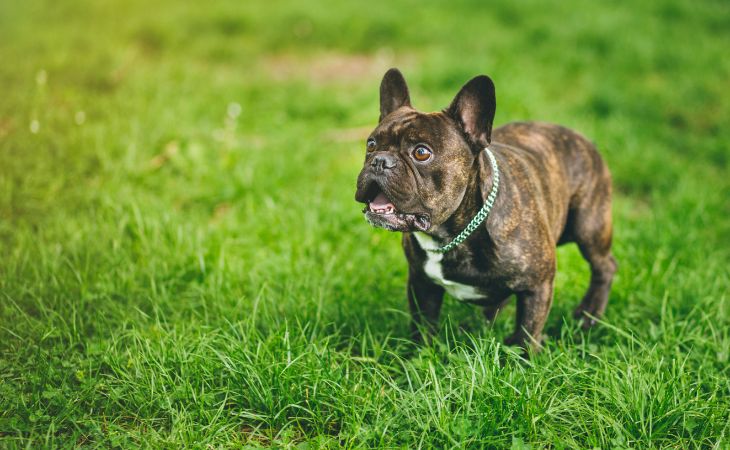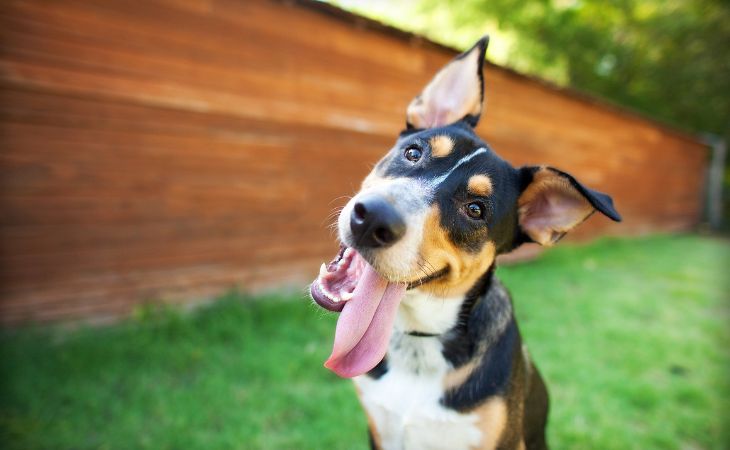Dogs feel emotions just like we do! With that being said, they do not express them in the same ways that we do. Here are some common dog emotions and how to understand them!
Why is it important to understand my dog’s emotions?
Understanding your dog’s emotions is the best way to establish a strong bond with them and ultimately become a better pet parent.
If you know how your dog is feeling, you can react accordingly. For instance, if you’re able to recognize when your dog is feeling sad, you can find solutions to improve their mood.
Common dog emotions
In this article, we will go over some of the most common dog emotions to teach you how to decipher them. We will also provide tips to help you improve your dog’s mood when they aren’t feeling their best.
Happiness
A happy dog equals a happy life. That’s right! Their happiness is incredibly contagious and can make us feel better when we are going through the worst of times!
When dogs feel happy, they are able to interact better with those around them. For example, happy dogs are more willing to play and accept affection.
Signs of happiness in a dog’s body language
- their ears stay in a natural position and face forward,
- their eyes are open and their pupils are normal-sized,
- they are breathing slowly or quickly (it varies depending on the intensity of the joy they are feeling),
- they are barking, whimpering, or even grunting,
- their tail stands in a normal position and wags,
- they might wiggle back and forth.
If your pet presents these signs when you return home, it means that they are happy to see you. This is the ideal moment to pet them and show them your affection.
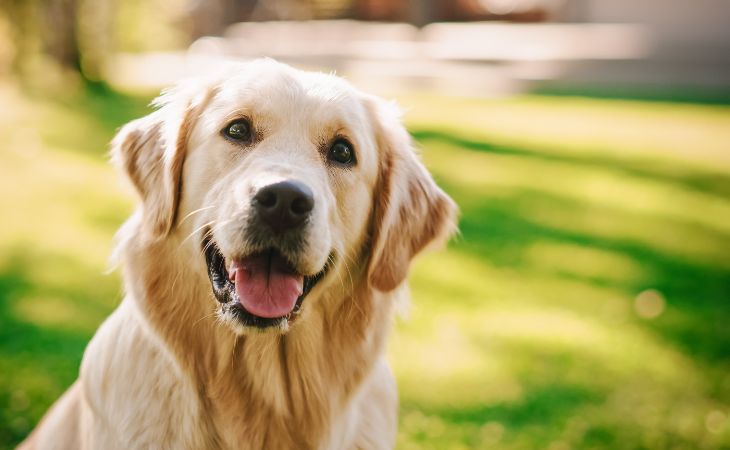
Fear
Fear is a normal dog emotion and is shown more frequently than we would like to believe. Dogs become afraid when they find themself in the presence of danger or in an environment that does not make them feel safe.
It’s important to keep in mind that a scared dog does not equate an uncourageous dog. This emotion is necessary for dogs to be able to survive in hostile environments.
When a dog’s fear is intense, they could bite to defend themself. They can also become anxious, which can last for a while and be a source of discomfort.
Being able to identify when your dog is scared will allow your to bring them the support they need.
Signs of fear in a dog’s body language and behavior
Not all dogs react in the same way when they are scared. While some become aggressive, others can curl up completely out of fear.
A few common signs:
- growling,
- panting,
- whining and whimpering,
- trembling,
- yawning multiple times in a row,
- stiff body,
- wetting themself,
- dilated pupils are a fleeting look,
- the urge to bite.
Keep in mind that a scared dog might not present all of these signs at the same time.
To calm them down, identify the source of their fear and do your best to keep them far away from it. If it’s not possible or your dog’s emotion is instense, try to reassure them with a soft and joyful tone. As we mentioned earlier, happiness is contagious.
Distract them with a toy or treats that they really like. This will make them feel happier and help them no longer feel afraid.
If your dog feels frightened often, your dog might be suffering from chronic anxiety. In this case, it is best to consult a professional. They will be able to help you identify the causes of their unhappiness.
This Letsgetpet article might interest you: Why is my dog hiding?
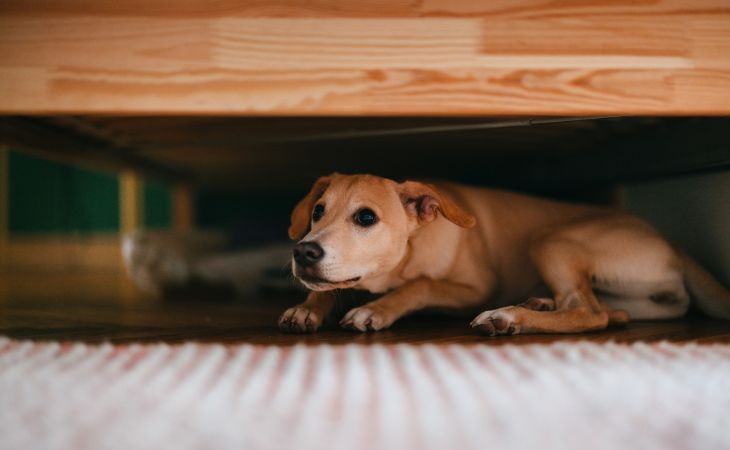
Sadness
Your dog might be feeling sad if they: eat less, stop playing, no longer ask for your attention, isolate themself, or barely move. Their eyes might also look lifeless and they may look like they have no energy at all.
Dogs could feel sad for many reasons. For example, the death of a family member or pet could evoke this emotion in them. In addition, the arrival of a new person or a new dog or your long absence can create feelings of abandonment. As a result, they will be curled up and prefer to stay in a corner.
To help them get out of this state, pet them and invite them to play with you. Try to encourage your dog to go for a walk in their favorite place to allow them to get their mind off what is making them angry. Most importantly, give them all of your attention and support. They will notice that you are there for them.
Anger
Don’t be fooled! Humans are not the only ones that are capable of getting angry. Our dogs can also get mad! For example, they could get frustrated while playing with you or another animal.
Usually, this emotion is sudden and does not last very long. For example, everything could be going fine and then their happiness can disappear in a flash.
When dogs get angry, they can start to bark or growl. With that being said, if their body is relaxed, it means that they are playing. If they, instead, stiffen up, it’s likely that they are feeling unhappy. Their pupils might also dilate and their eyes might get bigger. Their ears might also be taut and very upright.
To ensure that your dog does not become uncontrollably angry, try to calm down your dog. If you were playing, stop what you were doing immediately. If they were with another dog, separate them from each other.
Disgust
Have you noticed that your dog has a fleeting look or a disappointed expression? Are their eyebrows in the form of a triangle while standing in front of their bowl? This probably means that they are disgusted.
This emotion is useful for dogs because it allows dogs to protect themselves from dangerous products.
If your dog reacts this way in front of a toy or in front of their food, do not hesitate to change it.
Discuss it with your vet if your dog’s disgust does not go away to understand why your dog is reacting this way and find solutions that are the most suitable to them.
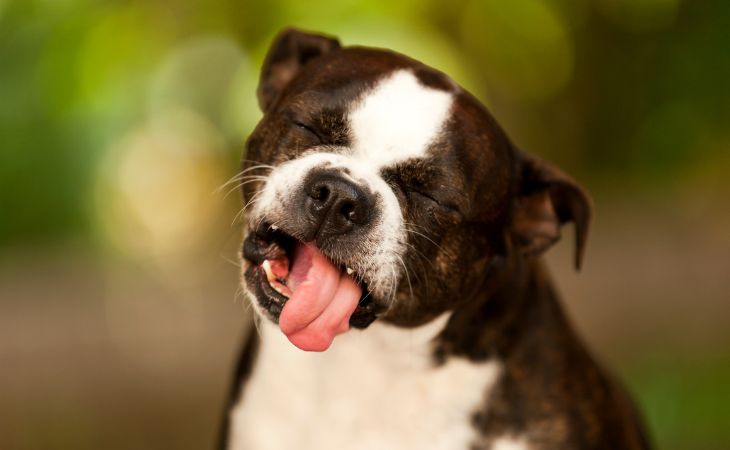
Surprise
This is one of the emotions that occurs the least frequently in dogs. It can also go unnoticed because this emotion does not last long.
Dogs express surprise when they encounter expected situations. With that being said, they can usually gather back their senses quickly and continue as if nothing happened.
If your dog gets surprised, they might stay in one place without moving. Their ears might also be standing tall. Your dog might hold this position for a moment before calming down. In addition, your pet might direct their gaze towards you to search for an explanation.
If the surprise is followed by joy, they will calm down. However, if they are afraid of the surprise, they will need help to calm down.
